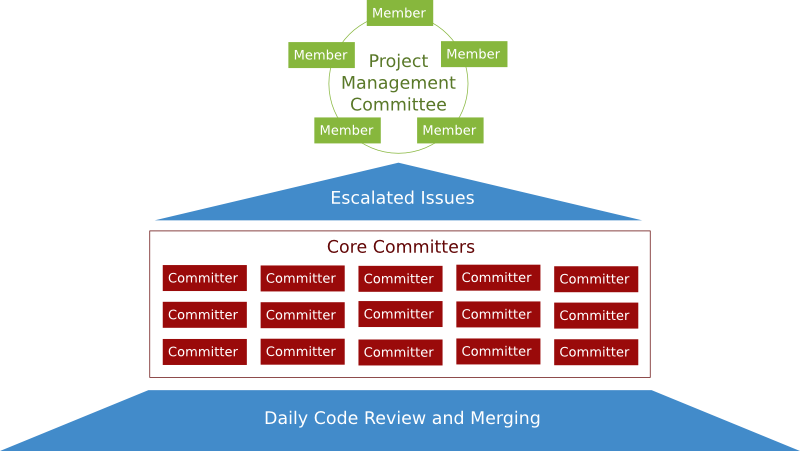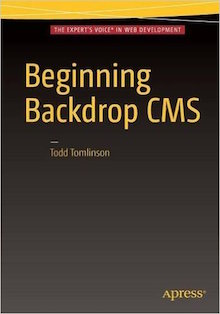Backdrop has a leadership team structured to promote participation and collaboration.
Backdrop CMS started its existence as an offshoot or fork of Drupal. Although Backdrop originates from a common codebase with Drupal, its philosophy, mission, and organization are distinct.
Leadership
The Backdrop Leadership team is comprised of the Project Management Committee and the Backdrop core committers.
Wherever feasible, both core committers and PMC members should play a mentoring role for project contributors, coordinating efforts and providing timely guidance and direction on new initiatives. While early encouragement won't guarantee that a particular change will be merged, it will help focus efforts and ensure time and effort are productively used.
Project Management Committee
The overall direction of the Backdrop project is guided by the Backdrop Project Management Committee (PMC), as modeled off of the Apache project. Their mission is to ensure that Backdrop follows the ideals of the project philosophy by approving proposed new features for each minor release.
If needed, it is also within the power of the PMC to change the project philosophy, but only by unanimous agreement. The PMC will also handle conflict resolutions, any code-related issue that has been escalated by a core committer, or any issue at their discretion, at which time they will provide direction as needed.
The individuals that make up this committee can be, but are not necessarily, core committers. The PMC should reflect all perspectives from within the Backdrop community. The following constituents should be represented: core developers, back-end developers, front-end developers, site-builders, people familiar with the business of website development, people focused on user-experience, and others as identified by the community. One PMC member may represent more than one constituent.
The PMC should also aim to be inclusive of people with different levels of technical experience, geographies, languages spoken, races, and genders.
Current PMC members
Each PMC member agrees to serve at least a two-year term, but may request to end their membership at any time. Additional individuals may be added to the committee by a unanimous vote by the PMC. Any current PMC member can nominate potential new members. Individuals may be removed from the committee by a simple majority vote (but ideally by consensus, minus the person up for removal). People who are removed as voting members of the PMC may be allowed ongoing access to the private PMC issue queue in an advisory role, if the remaining PMC members feel their input is valuable.
Votes on core philosophy changes and adding new core maintainers require a consensus agreement (a unanimous vote). All other decisions are made by seeking consensus, with a majority vote as a fallback where needed. In the event of a tie within the PMC, an elected member of the PMC may break the tie. The tie-breaker may be elected at any time by a majority vote of the committee. The currently elected tie-breaker is Andy Shillingford.
Core Committers
Core committers are responsible for the day-to-day business of reviewing and committing code to the core Backdrop repository. Core committers are enabled to use their discretion when merging pull requests that are in line with the goals of the project.
Core committers are trusted with upholding the philosophies of the Backdrop project, but are not entitled to set the direction of the project or make sweeping changes to subsystems or modules. If there is a question about a change conflicting with the philosophies of the project, the issue should be referred to the PMC for guidance and direction.
Current core committers
(Although we currently only have a few core committers, this management structure is intended to have a larger number of committers and a smaller PMC guiding the project; see diagram below.)
Conflict Resolution
In the event of a question or dispute between core committers, a member of the PMC, or the wider community, an issue may be escalated to the PMC for a vote. The vote may be taken via e-mail, phone call, or other means, as long as all members of the PMC are notified of the arranged time and means of the vote. Any PMC member may report the outcome of the vote, but it is required that at least one member of the PMC post notification to the escalated issue in the public issue tracker.

This structure is intended to allow core committers to handle the regular day-to-day work of reviewing and merging code, attempting to avoid a review bottleneck.









